- News
- Reviews
- Bikes
- Accessories
- Accessories - misc
- Computer mounts
- Bags
- Bar ends
- Bike bags & cases
- Bottle cages
- Bottles
- Cameras
- Car racks
- Child seats
- Computers
- Glasses
- GPS units
- Helmets
- Lights - front
- Lights - rear
- Lights - sets
- Locks
- Mirrors
- Mudguards
- Racks
- Pumps & CO2 inflators
- Puncture kits
- Reflectives
- Smart watches
- Stands and racks
- Trailers
- Clothing
- Components
- Bar tape & grips
- Bottom brackets
- Brake & gear cables
- Brake & STI levers
- Brake pads & spares
- Brakes
- Cassettes & freewheels
- Chains
- Chainsets & chainrings
- Derailleurs - front
- Derailleurs - rear
- Forks
- Gear levers & shifters
- Groupsets
- Handlebars & extensions
- Headsets
- Hubs
- Inner tubes
- Pedals
- Quick releases & skewers
- Saddles
- Seatposts
- Stems
- Wheels
- Tyres
- Health, fitness and nutrition
- Tools and workshop
- Miscellaneous
- Cross country mountain bikes
- Tubeless valves
- Buyers Guides
- Features
- Forum
- Recommends
- Podcast
review
£9,750.00
VERDICT:
Stunningly good bike that offers a fabulous mix of speed and comfort, although, as usual, the top-end tech comes at a price
Weight:
7,000g
Contact:
At road.cc every product is thoroughly tested for as long as it takes to get a proper insight into how well it works. Our reviewers are experienced cyclists that we trust to be objective. While we strive to ensure that opinions expressed are backed up by facts, reviews are by their nature an informed opinion, not a definitive verdict. We don't intentionally try to break anything (except locks) but we do try to look for weak points in any design. The overall score is not just an average of the other scores: it reflects both a product's function and value – with value determined by how a product compares with items of similar spec, quality, and price.
What the road.cc scores meanGood scores are more common than bad, because fortunately good products are more common than bad.
- Exceptional
- Excellent
- Very Good
- Good
- Quite good
- Average
- Not so good
- Poor
- Bad
- Appalling
The Trek Madone 9 Series features novel technology that results in a fast and very comfortable ride, but as is often the case with innovative engineering it doesn't come cheap.
I'm not just chucking around high praise here for the sake of it, this really is an exceptional bike.
Here's everything you need to know.
Find your nearest dealer here
Comfort
The Madone's comfort comes largely as a result of its IsoSpeed decoupler. If you need a refresher on exactly what that is, it's a technology based on a tube within a tube design.
The outer seat tube that you see is shaped for aerodynamics and isn't particularly flexible. But within that, there's a much skinnier round inner seat tube, bonded to the outer just above the bottom bracket and linked to the rest of the frame via a pivot up at the seat cluster. The inner seat tube can flex easily, allowing movement at the seatmast and saddle.
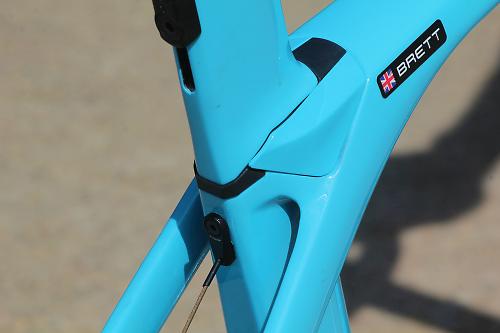
It's hard to explain the system without using the overused phrase 'vertical compliance', but that's what's on offer here: extra vertical compliance.
Here's a video that explains it from when Trek launched the Domane, the bike that first featured the IsoSpeed decoupler.
So, does the IsoSpeed decoupler work?
In short, yes. The longer version is: yeeeees.
Many aero bikes are, let's face it, fairly uncomfortable. It's hard to persuade their deep-profiled tubes to flex at all in pursuit of comfort. Trek's IsoSpeed system is a clever solution.
If you're familiar with riding a full suspension mountain bike, it's nothing at all like that. Not in the same county. But the IsoSpeed system does smooth over the lumps and bumps to a n appreciable degree. The effect is subtle, but it is noticeable. If you get the chance, take a Madone 9 Series on a test ride and you'll feel it for yourself.
As with most other bikes, you can fit headset spacers to fine-tune the height of the stem, although they're a clam shell design specific to the Madone 9 Series. You can fit larger tyres to add more comfort, too; the bike will take a 28mm width.
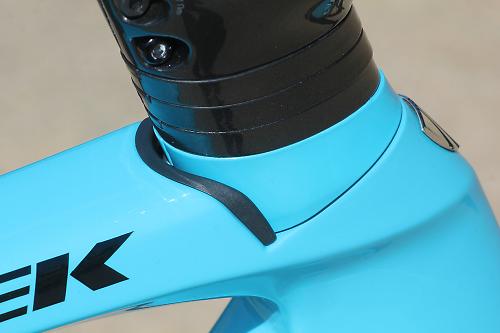
Aerodynamics
The Madone 9 Series' other major features are aimed at aerodynamic efficiency. Trek says that this is the fastest aero bike out there. We're upfront about the fact that we can't test aerodynamics, but we can explain what Trek has brought to the party here.
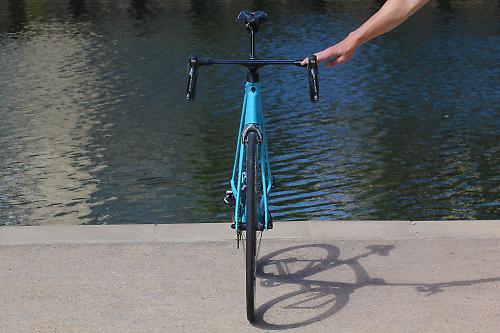
Frame tubes, fork legs and the seatmast are made to Kammtail profiles (Trek calls its profiles Kammtail Virtual Foil, or KVF). In other words, Trek has designed them to slip through the air with as little drag as possible, then chopped the back of those profiles off square to retain most of the aero performance while saving weight, avoiding handling issues in crosswinds, and remaining within the UCI's bike design rules.
One of the most eye-catching features is the front end where the direct-mount centre-pull brake is integrated into the fork. The cable is fully internal, routed down the front of the proprietary steerer tube and through the head tube.
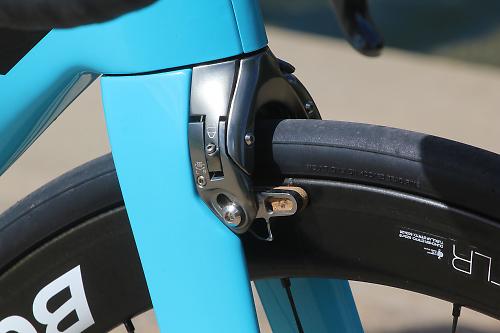
The brakes are from Trek's in-house Bontrager brand and they're designed specifically for this bike. The top of the front calliper is hidden within the head tube. There's not enough space in there for the calliper to move when the fork is turned so Trek has developed what it calls 'Vector Wings' – small flaps that flip up to allow the movement.
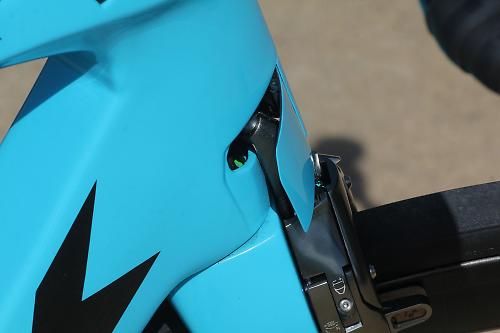
Those Vector Wings look quite fragile but I didn't manage to catch them on anything during testing, still less damage them. They are replaceable if you do destroy them in a stack.
The idea of all this front end integration is to ensure continuous airflow towards the down tube.
The top section of the Madone XXX integrated bar/stem is KVF-shaped too, and it's surprisingly comfortable. It fills your palm so there's very little pressure when you rest your hands up there, and the rearward edge is blunt enough that it doesn't dig into the space between your thumb and index finger.
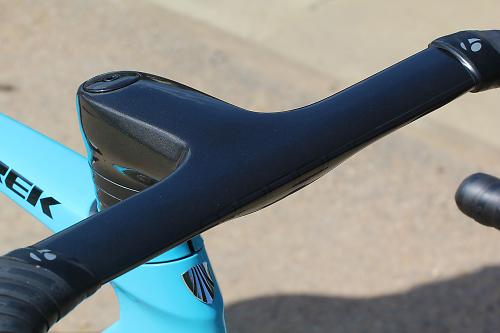
Trek reckons that the new bar saves 34g of drag (the average over 0-20 degrees of yaw) compared with the current Bontrager XXX Aero bar (normalised to 30mph).
The water bottles have been sited to minimise drag, with the one on the seat tube positioned as low as possible, and Trek says that even the 3S chain keeper (the little device that stops the chain coming off the inner chainring) has been designed with aerodynamics in mind.
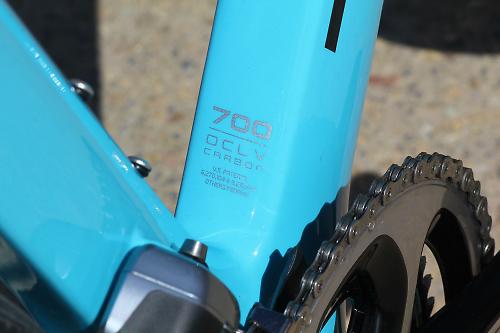
The new Madone also features a neat little design on the down tube that Trek calls the 'Control Center'. This allows you to make gear adjustments. It houses the front derailleur adjustment dial on bikes with mechanical setups, and it's where the Di2 battery and junction box live on bikes, like our test model, with electronic gears (it is not compatible with Campagnolo EPS). You get access to the trim button through a window in the top. A one-tab release exposes the charging port.
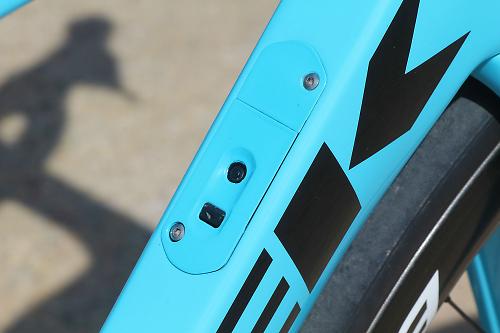
It's about time more brands started hiding that Di2 junction box, and Trek has come up with a great solution while keeping it highly accessible. Full marks!
The rear brake is in a traditional position on the seatstays (higher end models of the last Madone design had a chainstay-mounted brake, but Trek has re-sited it for convenience), and like the front brake it's a centre-pull design, the cable passing through the top tube with a stop at the seat tube.
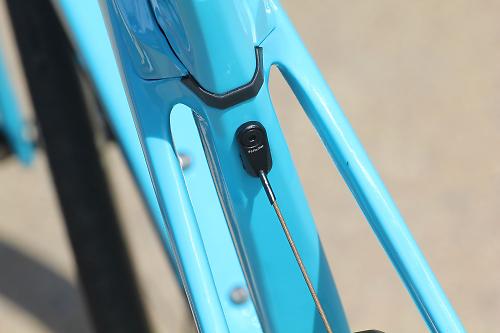
So, that's a whole lot of aero tech! And this is a very condensed version, believe it or not. As I mentioned, Trek says that all this adds up to make the Madone 9 Series the most efficient aero road bike out there. Other brands make similar claims for their own bikes, of course. I'd suggest you read Trek's white paper for the full in-depth explanation before you spend your cash.
Ride
I spoke a lot about the Madone 9 Series' comfort up top, but that's by no means its only skill. This bike is freaky in that it manages to combine soft seating with a super-fast feel.
You do pay a slight weight penalty for the IsoSpeed system. Putting one tube within another tube and adding a pivot has to add a little weight – there's no such thing as a free lunch – but Trek still claims that a 56cm Madone in an H1 geometry comes in at 950g. Our complete 58cm bike weighs 7.0kg (15.4lb) on the button. Okay, that's not as superlight as some other high-end race bikes out there – Trek's own Emonda is lighter, for example – but it's still pretty light, and aerodynamic efficiency beats a light weight in most situations.
The Madone feels quick and responsive as soon as you climb aboard and fire your legs into action. Our bike – not a standard model but a similar build to the 9.9 (see below) – shoots up to speed quickly and maintains that speed beautifully.
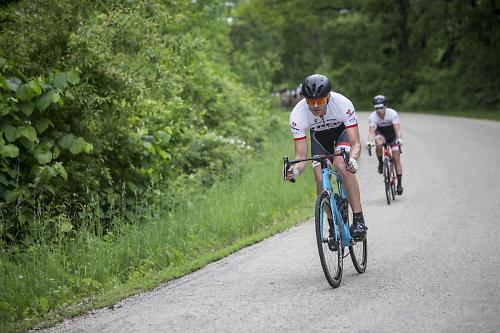
Climbing feels great on this bike. It's punchy on the short, sharp climbs, zippy when you get out of the saddle, and it feels good when you sit down for a long slog with your hands resting on the top of the Madone XXX integrated bar/stem (see above).
Descending is a real buzz. That's partly because the IsoSpeed system helps skim over any bumps and holes in the road, and partly because the bike as a whole is great for pinning it through the tight stuff and high-speed changes of line.
I wouldn't say that the centre-pull Bontrager brakes are right up there with Shimano Dura-Ace in terms of all-out power, but modulation is good so you're not making much of a compromise here.
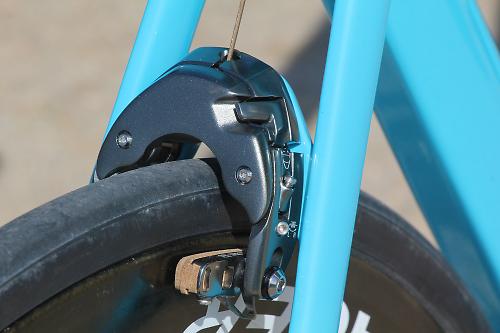
When it comes to sprinting, the frame feels taut and efficient but that handlebar isn't the stiffest ever. I've found this before with bars that have ultra-squashed top sections. When you're out of the saddle and your hands are on the drops, you can get a bouncing sensation up front as that slim carbon-fibre profile flexes slightly. It's purely down to the bar rather than anything to do with the frame or fork, and I only had this happen when I was giving it my best Greipel moves. Don't get me wrong, it's not the most flexy bar I've ever encountered, but it's not the stiffest either.
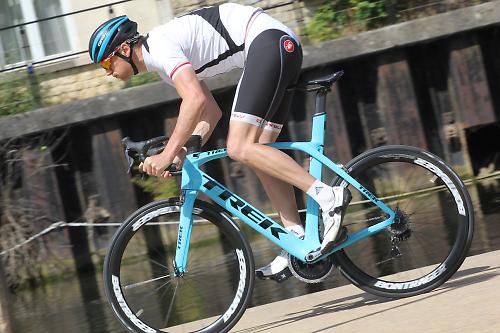
Overall, though, the Madone behaves superbly, the best feature being that its high level of comfort keeps you feeling fresher and up for the fight that much longer.
Negatives
How easy is it to change a brake cable on a Madone 9 Series bike? It's a more complicated job than on a standard bike because both run almost completely internally from the lever to the calliper.
There are no barrel adjusters for the brakes either – you have to use a diddy Allen key to wind each brake pad closer to the rim, so that's something best done at home rather than out on the road.
Taking the bike apart for travel is a bit more complicated than usual too, although Trek gives you full instructions on how to do it painlessly.
For those reasons, living with a Madone 9 Series bike might be a touch more difficult than usual, but it's nothing you can't handle.
One other potential downside, depending on your point of view, is that many replacement parts you buy will have to come from Bontrager. The brakes are proprietary, for example, and so is the fork, the handlebar and the seatmast. You won't be able to shop around and look for deals from other brands.

Geometry
Our Madone is built to Trek's low and stretched H1 geometry, although most of the range (see below) come in Trek's H2 fit – slightly less low and stretched but still race-focused.
To put some figures on that, a 56cm Madone 9 Series in an H1 fit has an effective top tube of 56cm and a head tube of 14cm. The same bike in an H2 fit has the same length top tube but a 17cm head tube. The main difference between them is in the stack height (the vertical distance between the bottom bracket and the top of the head tube): 54.9cm versus 57.7cm.
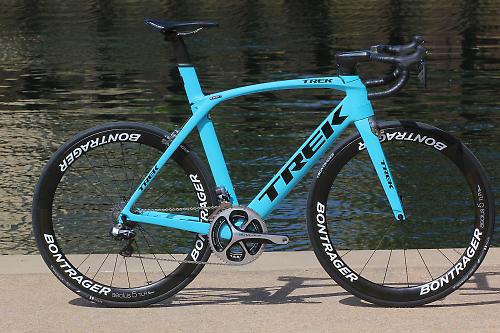
Pricing
The Bontrager 9 Series bikes are hi-tech and they come with hi-tech price tags.
The most accessible Trek Madone 9 Series bike is the 9.2, equipped with a Shimano Ultegra mechanical groupset and Bontrager's new Paradigm Elite wheels. It's £4,500.
The 9.5 with a Shimano Dura-Ace mechanical groupset and Bontrager Aura wheels is £6,000 and the Madone 9.9 (available in standard and women's versions) with a Shimano Dura-Ace Di2 groupset and Bontrager Aeolus 5 D3 wheels is £9,000.
All of these bikes come with H2 fit frames.
The Madone Race Shop Limited model, with a frame made from a higher grade of carbon fibre and built to an H1 geometry, Shimano Dura-Ace Di2 and Bontrager Aeolus 5 D3 wheels, is £9,750.
An H2 frameset is £3,350 while a Race Shop Limited H1 frameset (with that higher grade of carbon fibre) is £4,100.
The bike we have here is essentially the Madone Race Shop Limited model, but Trek painted it in road.cc colours for our review. If you happened to want this colour (or any other colour/finish), you'd need to go through Trek's Project One programme that allows you to customise both the spec and the finish.
Conclusion
As cyclists we get used to having hyperbole thrown our way by bike brands releasing what are actually pretty ordinary bikes, but the Madone 9 Series backs up Trek's claims with a fabulous performance out on the road. This is a bike that's genuinely very different from the norm – and not just different for the sake of being different. The technology on display here contributes to a bike that's very fast and very comfortable.
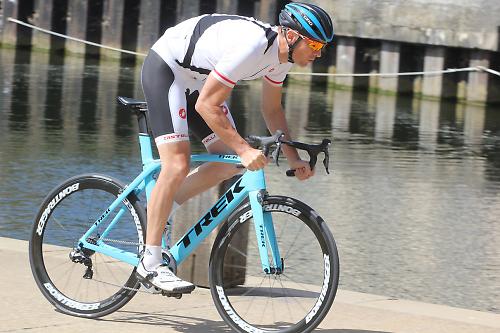
If I had a bottomless pot of cash available to buy a high-end race bike (if only!), this is where I'd be spending my money right now. If you do have the money and can live with the fact that maintenance in some areas is more complicated than usual, the Madone 9 Series deserves a place somewhere near the top of your wish list.
Verdict
Stunningly good bike that offers a fabulous mix of speed and comfort, although, as usual, the top-end tech comes at a price
road.cc test report
Make and model: Trek Madone 9 Series Project One
Size tested: 58cm, custom finish
About the bike
State the frame and fork material and method of construction. List the components used to build up the bike.
Frame 700 Series OCLV Carbon, KVF (Kammtail Virtual Foil) tube shape, Madone IsoSpeed, Micro-adjust seat mast, E2, BB90, invisible cable routing, Control Centre, precision water bottle placement, Aero 3S chain keeper, DuoTrap S compatible
Fork Madone KVF full carbon, carbon E2 asymmetric steerer, carbon dropouts, integrated brake and stem
Sizes 50, 52, 54, 56, 58, 60, 62cm
Frame fit H1
Wheels Bontrager Aeolus 5 TLR
Tyres Bontrager R4 Hard-Case Lite, 220tpi, aramid bead, 700x25
Shifters Shimano Dura-Ace Di2, 11-speed
Front derailleur Shimano Dura-Ace Di2, braze-on
Rear derailleur Shimano Dura-Ace Di2
Crank Shimano Dura-Ace, 53/39 (double)
Cassette Shimano Dura-Ace, 11-28, 11-speed
Chain Shimano Dura-Ace
Saddle Bontrager Paradigm XXX, carbon rails
Seatpost Madone micro-adjust carbon seatmast cap, 25mm offset
Handlebar Madone XXX Integrated Bar/Stem, KVF profile, Invisible cable routing, OCLV carbon, VR-CF
Stem Madone XXX Integrated bar/stem, OCLV Carbon, 7-degree, aero top cap pocket, w/Blendr computer & light mounts
Headset Madone integrated, stainless cartridge bearings, sealed, 1-3/8in top, 1.5in bottom
Brakeset Madone aero, integrated, direct mount
Bar tape Bontrager Supertack tape
Tell us what the bike is for, and who it's aimed at. What do the manufacturers say about it? How does that compare to your own feelings about the bike?
It's a full-on race bike. Trek divides its road line into three: Emonda for those wanting light weight, Domane for those wanting comfort, Madone for those wanting aerodynamics.
Trek says: "Madone is the ultimate fusion of power, aerodynamics, ride quality and integration. There are no two ways about it: the first true super-bike is a marvel of road bike engineering.
"Every detail of Madone is engineered for unprecedented futuristic performance, ride quality and efficiency, putting every single watt you earn toward demolishing your competition."
Frame and fork
Overall rating for frame and fork
9/10
Tell us about the build quality and finish of the frame and fork?
Excellent quality.
Tell us about the materials used in the frame and fork?
Our frame and fork are made from 700 Series OCLV carbon fibre. In truth, the 600 used for most of the other 9 Series bikes is very similar in terms of properties and weight.
Tell us about the geometry of the frame and fork?
Ours came in Trek's low and stretched H1 fit. 9 Series Madones are also available in a slightly more relaxed H2 fit (see review for details).
How was the bike in terms of height and reach? How did it compare to other bikes of the same stated size?
The H1 fit is fairly low. If your back doesn't like an aggressive position, go for the H2.
Riding the bike
Was the bike comfortable to ride? Tell us how you felt about the ride quality.
Very comfortable. That's one of the bike's key characteristics.
Did the bike feel stiff in the right places? Did any part of the bike feel too stiff or too flexible?
It felt stiff around the bottom bracket and the head tube. The only place I noticed a lack of stiffness was in the handlebar when I was sprinting; there was a small amount of bouncing there when riding hard out of the saddle with my hands on the drops.
How did the bike transfer power? Did it feel efficient?
Yes, it felt efficient around the bottom bracket and through the centre of the bike.
Was there any toe-clip overlap with the front wheel? If so, was it a problem?
A small amount. Not a problem.
How would you describe the steering? Was it lively, neutral or unresponsive? Neutral to lively.
Tell us some more about the handling. How did the bike feel overall? Did it do particular things well or badly?
I enjoyed descending on this bike thanks to the IsoSpeed decoupler and good manoeuvrability.
Which components had the most effect (good or bad) on the bike's comfort? would you recommend any changes?
The main feature that leads to the bike's comfort is the frame's IsoSpeed decoupler.
Which components had the most effect (good or bad) on the bike's stiffness? would you recommend any changes?
I thought the handlebar could have been stiffer, but it's proprietary. I'd only want to change it if I was a sprinter.
Which components had the most effect (good or bad) on the bike's efficiency? would you recommend any changes?
The wheel stiffness is good and the same goes for the chainset.
Rate the bike for efficiency of power transfer:
9/10
Rate the bike for acceleration:
9/10
Rate the bike for sprinting:
8/10
I thought the handlebar could have done with being stiffer for sprinting.
Rate the bike for high speed stability:
8/10
Rate the bike for cruising speed stability:
8/10
Rate the bike for low speed stability:
8/10
Rate the bike for flat cornering:
9/10
Rate the bike for cornering on descents:
9/10
Rate the bike for climbing:
9/10
The drivetrain
Rate the drivetrain for performance:
9/10
Rate the drivetrain for durability:
7/10
Rate the drivetrain for weight:
9/10
Rate the drivetrain for value:
8/10
Wheels and tyres
Rate the wheels and tyres for performance:
9/10
Rate the wheels and tyres for durability:
8/10
Rate the wheels and tyres for weight:
8/10
Rate the wheels and tyres for comfort:
8/10
Rate the wheels and tyres for value:
8/10
Controls
Rate the controls for performance:
9/10
Rate the controls for durability:
7/10
Rate the controls for weight:
9/10
Rate the controls for comfort:
9/10
Rate the controls for value:
7/10
Your summary
Did you enjoy riding the bike? Yes
Would you consider buying the bike? If I had the money, no doubt about it.
Would you recommend the bike to a friend? Yes
Rate the bike overall for performance:
9/10
Rate the bike overall for value:
8/10
Use this box to explain your score
This exceptional bike boasts some novel tech that really moves the ride forward. So many bikes are simply variations on a theme, but Trek has brought genuinely new tech first to the Domane and now to the Madone. This bike is a clear 9 for performance.
Unfortunately, all that tech adds to the price and it'll take a while to trickle down to more affordable levels.
About the tester
Age: 43 Height: 190cm Weight: 75kg
I usually ride: My best bike is:
I've been riding for: Over 20 years I ride: Most days I would class myself as: Expert
I regularly do the following types of riding: commuting, club rides, sportives, general fitness riding
Mat has been in cycling media since 1996, on titles including BikeRadar, Total Bike, Total Mountain Bike, What Mountain Bike and Mountain Biking UK, and he has been editor of 220 Triathlon and Cycling Plus. Mat has been road.cc technical editor for over a decade, testing bikes, fettling the latest kit, and trying out the most up-to-the-minute clothing. He has won his category in Ironman UK 70.3 and finished on the podium in both marathons he has run. Mat is a Cambridge graduate who did a post-grad in magazine journalism, and he is a winner of the Cycling Media Award for Specialist Online Writer. Now over 50, he's riding road and gravel bikes most days for fun and fitness rather than training for competitions.
Latest Comments
- HoarseMann 1 min 4 sec ago
Apple Maps verdict from me… complete fail....
- Rendel Harris 38 min 59 sec ago
Yep, that's why 70% of World Tour teams are using Shimano, those people are really noted for not wanting the best kit, they'll take any old crap.
- mdavidford 1 hour 2 min ago
That only holds if the 4% always pass within 1.5m, though. Given that at least some people will pass wider only some of the time, you've overstated...
- Bmblbzzz 1 hour 24 min ago
"A brutalist interpretation of a road" So true. Grey markings on grey paving slabs surrounded by other grey paving slabs...
- Simon E 1 hour 8 min ago
Driver in a Citroen travelling at 70mph crashes into the front of a house in Canterbury Road, Faversham at 5.30am on Sunday....
- arichman 1 hour 57 min ago
Somewhat confusingly, Velocio includes both a fit and a size chart, and says to use the fit chart (which uses height and weight) as the guide for...
- wtjs 3 hours 17 min ago
I can't find anbody else with this problem, so I'm putting it here. I went to visit a friend near Chester, using the excellent Merseyrail cycle...
- Rendel Harris 5 hours 31 min ago
As I said below, being from the same neck of the woods I know that the primary demographic of the core support of WDAG is folks living in the roads...



































































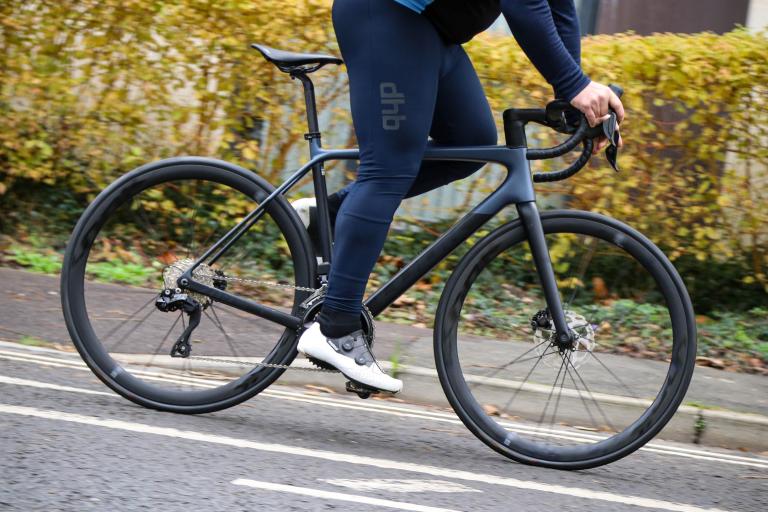
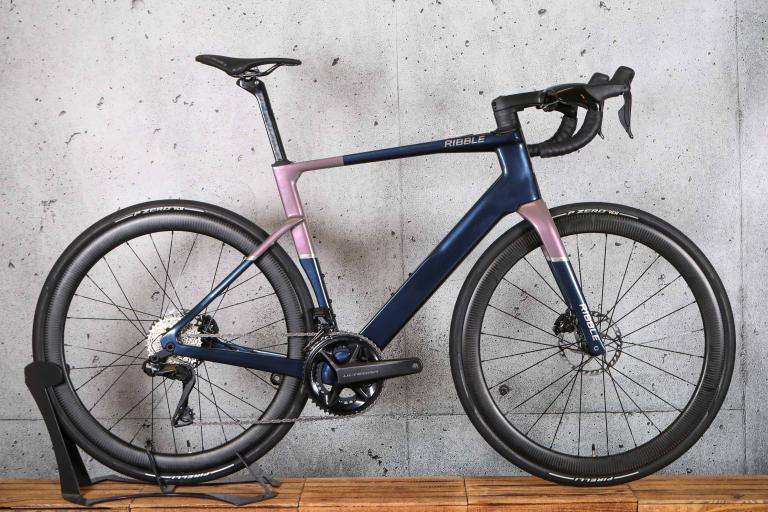
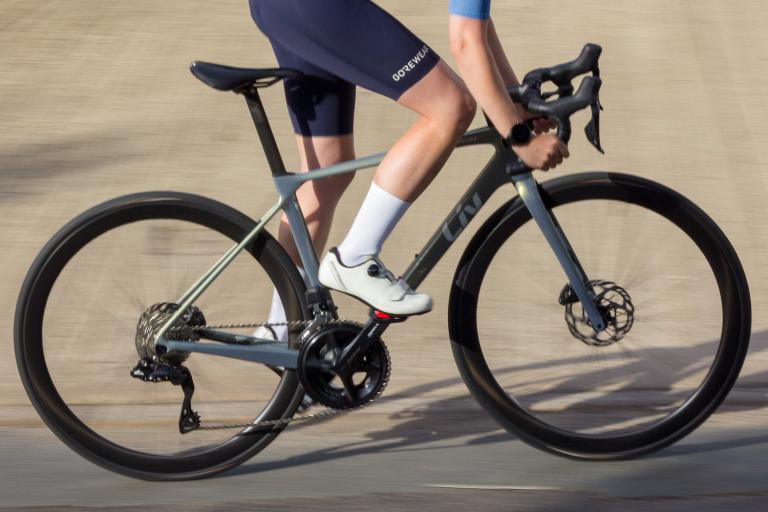
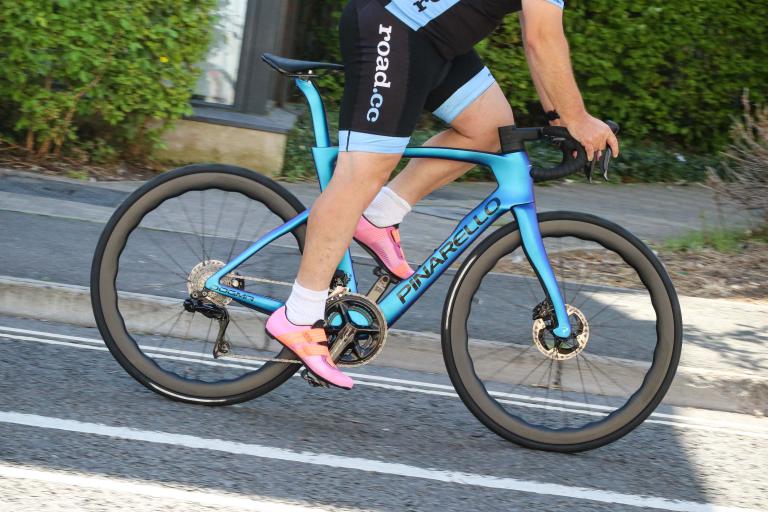
Add new comment
23 comments
Hi all , I am flying to Italy and need a box for my 9 SRS anyone help , I can't remove aero bars or front brake brgds Ade
Hey, can I ask you the saddle height on this 58 cm frame ? Can't figure out how a 58cm would look like with my 78,8cm saddle height (i hesitate between 56 and 58 on a H1 frame)
Thanks
This is best porn I've seen in a while.
I just wish it came at a smidgeon of the price.
Any mechanics out there tell me whether they could get Campag EPS to "work" on this frame?
Not keen on the colour.
I think it's a lovely looking bike, and hats off to Trek for trying to do something genuinely interesting. In the flesh it's a striking looking ride. Possibly a tad overengineered, but I look forward to the one they'll release in a couple of years that's going to be simpler and cheaper.
So, is the Domane going to go then? Or will I just be sold to sportivistes??
People keep refering to new tech, but those brakes are essentially a rework of Campag Delta.
Not really trying to dis Trek, but there's a whole lot of marketing going on here...
Don't worry! Domane is definitely not going anywhere. The Madone is a very different platform to suit a different rider type. Although it has the IsoSpeed, it's not as compliant as the Domane.
We now have three different bikes to match the needs of different riders. Some want to maximise comfort without sacrificing performance. That's Domane. Some want to be as aero as possible (and still comfortable), that's Madone. And for those who prioritise weight, that's Emonda.
While the brakes on Madone might resemble Delta breaks, they perform very differently. There are no issues with stopping power, for one thing.
slightly off topic, but are there (imminent) plans to add the Domaine Series 6 disc to the Project One custom builder or release it as a frameset?
I have a domane and can confirm that the Isospeed decoupler really works.
I have only the original 2.0 version with steel frame, but it's the most comfortable bike I've ever ridden - better than my specialized Roubaix Expert which cost well over twice as much.
Not been of fan of trek road bikes for a while - but this is nice!
dayummmmmm


can i have two please
Lovely colour, horrendous looks.
The iso speed seat post on this is hideously over engineered...3 posts going on there..
Ergo post by LOOK does it better for over a decade....
And no matter what instructions they give you for travel it will be a prick to take apart and reassemble... high end TT bike users have found that and the manufacturers are starting to address it..
and whilst running a new inner cable will be straight forward, replacing the outers will be a shocker... for the home wrench just time consuming, for those using shops bloody expensive...
I'm fine with all of this, top end tech takes more effort and money to run.. but lets not pretend its not the case...
Only two posts. The seat mast is connected to the the same tube that runs down the inside of the aero tube. This inner post is the IsoSpeed.
Travel is not nearly as difficult as with a bike like the Speed Concept. Providing that the bike is assembled properly, there will be enough inner cable and housing to allow the bars to be removed from the stack, and turned sideways.
Experience mechanics can build a complete Madone in around an hour to an hour and a half, once they've followed the manual on the first ones they build, so changing cables isn't as difficult as it might seem.
Ultimately, this bike isn't more or less difficult to build that most others. It's just different, and thus requires mechanics to read the manual and follow it to the letter a few times, and once they've done that it will be pretty seamless to build.
Also, even with the IsoSpeed tube, the complete bike weight of those being used by Trek Factory Racing is 6.9kg.
I really like it, though I think it looks better in the darker shades.
And I don't you can compare any of the major brands top end offerings price-wise with Canyon (or any other direct sales brand).
I think this is a really interesting bike, and particularly like all the integration. They've produced a number of original, distinctive features that do differentiate it. I'm sure some of these features filter down eventually, but I think £3,350 for a frameset is about what we'd all expect. Isn't it?
I've got a 5 series madone and just love the way it rides, particularly going downhill.
I admire the degree of innovation and I am slowly falling in love with the Madone although being a Specialized Venge rider. What could have been the motivation behind going through all the pain and designing such a new brake combo, especially when considering that disc brakes are about to make it to the peloton? Can anybody tell?
It's not even got a back light!
So I just have to comment here to win one, right?
Just sold a Domane (brilliant bike) and started racing this year so looking for a top spec race frame for 2016.
I'm Treks target market-sold on the isospeed.
Am I buying a Madone.....NOPE!
That price is RIDICULOUS. £4300 for the frame the pro's race.
Canyon Ultimate SLX for me (a frame the pro's race) £1600.
The Aeroad may be a better comparison (more aero) but is only £500 more and that includes the aero bar/stem.
You can get a 9 Series Madone in Project One, with full Ultegra and aero wheels for around £5300. That can go lower still if you use RXL wheels instead of Aura wheels. Project One will go live for the Madone on Thursday, so you can play around with configurations yourself.
Just out of curiousity, what do you think would be a reasonable price for something that has so much new tech on it?
new tech is surely part and parcel of improving /updating bike models; some years see a bigger change than others, sometimes incremental, sometimes more substantial. While Trek has reduced prices on many 2016 bikes, I'm surprised to see such a price hike on the new top Madone compared to the previous top end 7.9 frameset which is currently listed at £3000 on your website.
I like it.